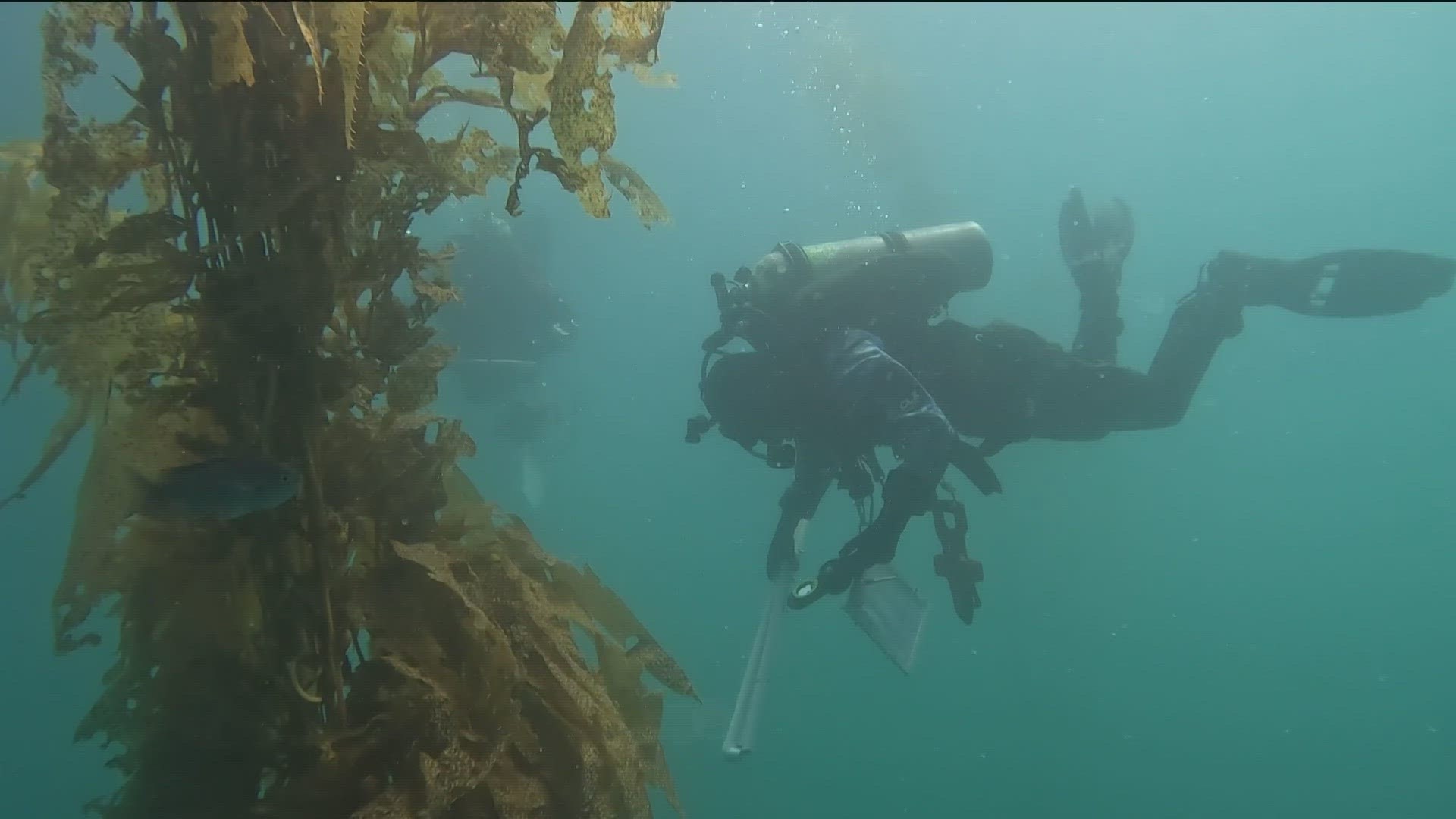SAN DIEGO COUNTY, Calif. — In San Clemente just off the pier is the Wheeler North Reef.
It was built as mitigation for the environmental impacts caused by the San Onofre power plant. The reef is now over 300 acres in size and is a thriving habitat.
Dan Reed is a research biologist with the Marine Science Insitute at UC Santa Barbara. He explains what happened when an outfall from the cooling pipe San Onofre Nuclear Power Plant stirred up the sandy bottom.
"I think the reef is quite a success given that turbid plume caused a reduction in a substantial portion of that kelp forest," said Reed of the conditions before the construction of the Wheeler Reef.
So, the California Coastal Commission amended the San Onofre Nuclear Generating Station agreement and required Southern California Edison to construct an artificial reef. That began in 1999 and UC Santa Barbara became the independent monitor.
"It consisted of 56 modules, each 40 meters by 40-meter squares," added Reed.
After a second phase was still not meeting its goals, a third phase was finished in 2020.
"That essentially made it the largest artificial reef of its kind in the world," said Reed before adding, "Since that expansion has been done it has surpassed the target level for fish in the last two years or so, so, it's on a promising trajectory."
David Huang is the Director of Computing and Marine Research at UC Santa Barbara Science Institute.
"Even in the base of the giant kelp, there's life, not only inside and the surrounding rocks, but throughout the entire water column."
Huang has been diving on the reef since 2000, monitoring its progress.
"It was colonized almost immediately which was really great to see," said Huang.
And with the expansion the Wheeler North Reef is flourishing.
"There's stuff all through the water column. You see schools of fish, sardines, and Kelp Bass. You'll run into Giant Sea Bass, and, on occasion, you may run into Sharks now and then."
There is also a surprise resident.
"There are tons of Lobster everywhere which is really great to see. That was one of the unexpected things to happen with the reef."
The reef is just offshore from San Clemente and is 373 acres.
If that sounds big, you're right.
"It is the biggest artificial reef in the world," said Huang.
Over the past couple of years, Wheeler North has met and exceeded its benchmarks to offset the water outfall from the San Onofre Nuclear Power Plant, in kelp growth and fish.
"The fish production, the kelp production, and the composition of species on the reef look very similar in abundance and diversity that you would see on the natural reefs. And in my view, it's quite successful in meeting the goals it set out to achieve," said UC Santa Barbara's Dan Reed.
And now that the Wheeler North Reef has become so successful, its monitoring will be cut back.

